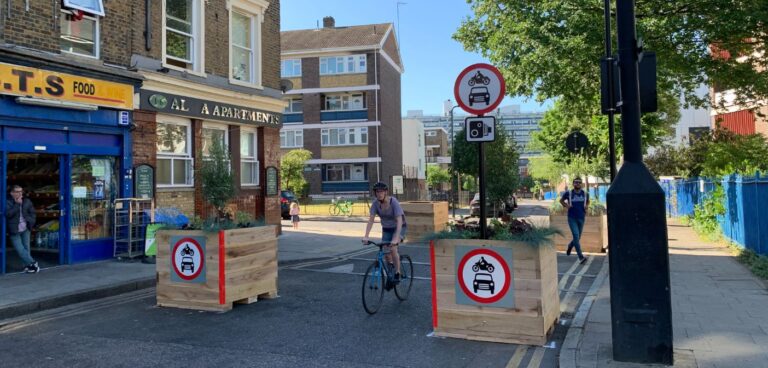Both pollution and traffic in and around Homerton’s low traffic neighbourhood (LTN) have decreased since the scheme was introduced, new analysis from Hackney Council shows.
Comparing nitrogen dioxide (NO2) pollution in 2020 with the previous year, the analysis shows that NO2 levels reduced at eight out of nine sites monitored, with no change at the ninth.
On boundary roads around the LTN, there was an average reduction of 21.8% in NO2 concentrations, with all below national air quality objectives of 40ug/m3.
Inside the LTN, there was an average reduction of just over 40% in NO2 concentrations, with these also below the national air quality objective.
“These reductions in air pollution in Homerton cannot be attributed directly to the effect of the LTN, but are likely to have been influenced by reductions in motor vehicle usage in the area,” said Cllr Mete Coban, cabinet member for energy, waste, transport and public realm, Hackney Council.
“Alongside traffic data, I hope they demonstrate the benefits LTNs can have, and reassure residents who live on boundary roads about their effects there.”
Read more: Hackney issues tender for 3,000 EV chargers by 2030
Regarding traffic levels, data taken in May 2021 at 24 locations in and around the LTN, shows traffic down on average inside the LTN by 35%, and down on boundary roads by 5% compared to before the pandemic.
At the same time as these reductions, background traffic levels according to counts taken on 12 of the borough’s main roads, were shown to be on average 1% higher than in the same period in 2019.
What’s more, monitoring from November 2020 showed traffic down by 40% inside the LTN and 7% on boundary roads.
“We’ll be considering this data, alongside air quality data, responses from consultations on LTNs and borough-wide polling before making decisions on whether or not to make them permanent,” added Coban.





